#traditional catholic martyr saints
Text

#traditional catholicism#traditional catholic images#traditional catholic saints#traditional catholic saints images#traditional catholic saints quotes#st. thomas more#traditional catholic martyr saints#the protestant revolt in england
23 notes
·
View notes
Photo

Bernardino Luini (Italian, c.1480–c.1532) (after)
Saint Catherine of Alexandria, c. 1507 - 1532
National Trust, Stourhead
Saint Catherine, crowned (alluding to her royal birth), wears a red robe with an IHS brooch. IHS is the abbreviation of 'Jesus' in Greek, and the brooch both indicates her conversion to Christianity and alludes to her mystic marriage to Christ. It could also be a reference to the then recently deceased and canonised Bernardino of Siena (1380–1444), a Franciscan friar and preacher who displayed this monogram on a tablet during his sermons. The virgin saint holds the palm of her martyrdom and a book. Behind her is her attribute, part of the spiked wheel on which she was tortured. She was beheaded by the pagan Emperor Maxentius in around AD 310.
#Bernardino Luini#italian art#Italy#italian#medieval#christian#christianity#christentum#christendom#saint catherine#saint catherine of alexandria#art#fine art#fine arts#oil painting#traditional art#female portrait#martyr#saint#roman catholic#catholic#christian art#Medieval Times
56 notes
·
View notes
Text
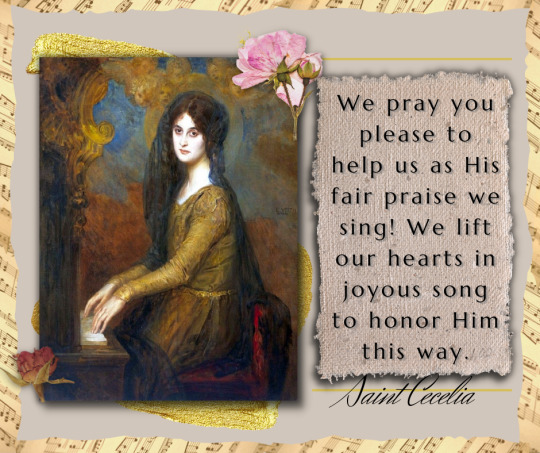
”We pray you please to help us as His fair praise we sing! We lift our hearts in joyous song to honor Him this way.” - St. Cecilia
#St. Cecilia#Saint Cecilia#saint of the day#saints#saint quotes#traditionalism#roman catholic#roman catholicism#catholic#feast day#piano#martyrdom#martyr#Praise God#Ora pro nobis#oremus#pray for us#gold#music#traditional femininity#st. cecilia quotes
8 notes
·
View notes
Text
Sts. Cosmas and Damian, Martyrs
Sts. Cosmas and Damian, Martyrs
sts.-cosmas-and-damianDownload
Sources:
1962ordo.today
https://www.divinumofficium.com/
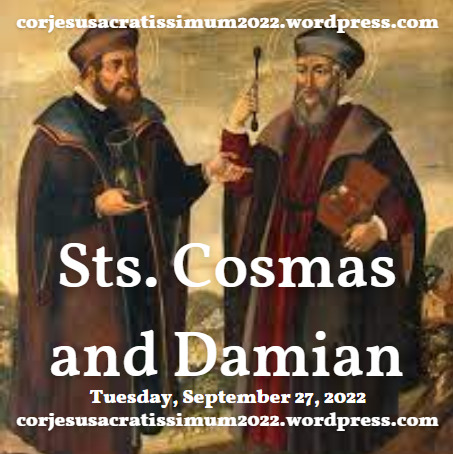
View On WordPress
#Catholic#Catholic mass#Catholic Prayer#Is Damian a Catholic name?#Jesus#latinmass#Martyr#Martyrs#popefrancis#Prayer#Sacred Heart#sacred heart devotion#sspx#Sts. Cosmas and Damian#TLM#Traditional Catholic#Traditional Catholicism#What are Saint Cosmas and Damian the patron saint of?#What did Saint Cosmas and Damian do?#What is saint Damian known for?#When was St Cosmas and Damian born?#Who is the patron saint of medicine?
4 notes
·
View notes
Text


#all saints day#all hallows eve#catholic#christian#tradition#beauty#art#martyrs#jesus christ#blood#saints#celebration#feast day#november#autumn#fall#halloween#aesthetic#truth#faith#love#courage#decor#reminder#remembering#family#friendship
0 notes
Text
Jinx and her Catholic symbolism means so much to me. St. Joan Of Arc, martyr and Saint, who led the French army to victory, mirrors what the role of Jinx will become in this upcoming season; perhaps she too, will become a martyr of sorts--or maybe a Saint.


Her baptism, which is the first rite Catholics take into entering the Church, she takes her first step in becoming Jinx. she washes away her Original Sin (in this instance, Powder) and becomes a Saint--Jinx.

Her surgery scene could even be read as Catholic symbolism. she receives the Eucharist, the Body of Christ, in the form of Shimmer; Jinx is saved by a drug that gives her a second chance, just like what was done at the Last Supper when Jesus said: "This is my body."

Her full Confirmation (another rite in the Catholic Church) is taking on the role of Jinx, and in accepting that role, she becomes a martyr; or if you want to go further, a Christ-like figure due to her near-death experience and subsequential raising from the dead.

The crow, a traditional symbol of death, is replaced with doves, a symbol of hope. in killing her fear by killing the crow, she becomes a symbol herself.



Silco was a horrible person and an even worse influence on her, but he was right about one thing: Jinx is perfect.

136 notes
·
View notes
Text
Me: I just don’t get that whole Chain of Samael thing, Samael didn’t even get to see the Ninth be established
Also me: suddenly remembers that the weighted end of the chain is a Pelvis bone & that it is called the “relic of this long-dead warrior”. In catholic parlance, a relic can either be something that belonged to a Saint but is also very often a piece of physical remain of said saint. And such a thing is usually a core component of churches (legit for the longest time you could not have a catholic church without a relic it was MANDATORY). In ye olden days, there was also a HUGE catholic tradition of building cemeteries on top and around the graves of martyrs. And the Chain of Samael was kept in monument in the Anastasian, which is described as the sacred tomb of warriors and second most holy place on the Ninth.
Me: OH it’s not the chain of Samael it’s the chain OF Samael. It’s MADE with Samael!
#the anastasian#samael novenary#anastasia novenary#anastasia the ninth#the locked tomb theory#the locked tomb speculation#the locked tomb#harrowhark nonagesimus#the ninth house#harrow nova
1K notes
·
View notes
Text
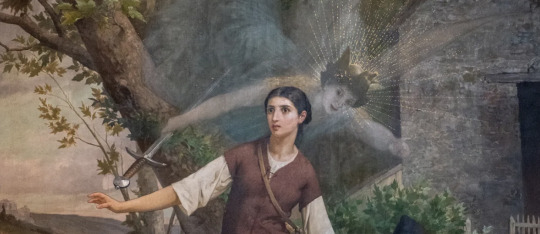





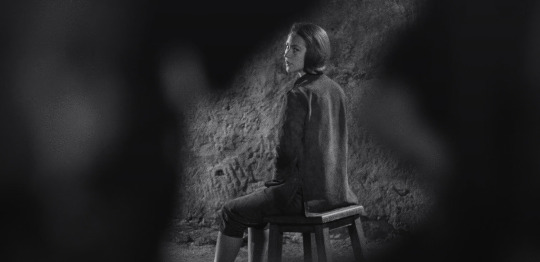
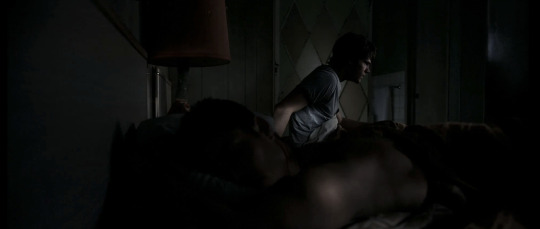

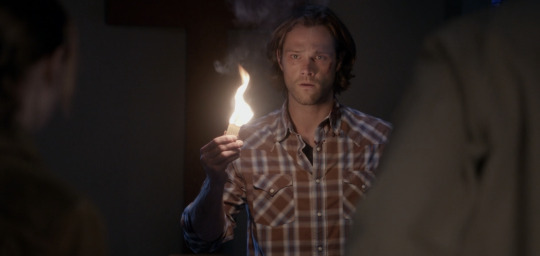


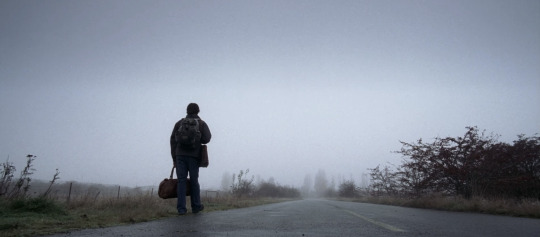
JOAN OF ARC + SAM WINCHESTER: POSTMODERN MARTYRS
Luc Besson, Joan of Arc (1999) | Panthéon, "Jeanne d'Arc ayant la vision de l'archange Michel" | 1.14, "Nightmare" | Anne Llewellyn Barstow, "Joan of Arc: Heretic, Mystic, Shaman" | Susan Visvanathan, "Representing Joan of Arc" | 2.13, "Houses of the Holy" | Robert Bresson, The Trial of Joan of Arc (1962) | John Everett Millais, "Joan of Arc" (1865) | 11.02, "Form and Void" | 1.11, "Scarecrow" |
This is incredibly self-indulgent, but there's an interesting comparison to be made here I think, between Joan as a cultural symbol and Sam as a variant on her. like her - his character also consists of ambiguities. He is both hero and monster/witch, saviour and pariah, transgressive while still fitting into the traditional mold of heroism. And because of their ambiguities, they're also both outsiders.
Joan is isolated because of her steadfast faith, and she's punished for it. She saves France as a young girl in men's clothes, hearing the voices of angels, and gets put on trial as a heretic by the very same Church that would later burn her at the stake. The very same institution to later saint her. Only in death does she get to become a holy martyr, no longer ambiguous. She is the hero with a thousand faces; Catholic saint, patriotic icon, queer symbol.
Unlike Joan, however, Sam's narrative is a horror story on failed martyrdom. He is the saint who never gets to die. His sacrifices never end in closure, not really. he's either stopped at the last moment, or retrieved from the depths of hell. He's denied the certainty that comes with dying, the nobility that comes with becoming immortalised as a memory. His faults are laid out on the altar, time and again, but he's not granted the crowning reprieve that death would afford him.
He holds onto hope and belief in others, clings onto faith in a higher power, whether that power be God or his family - his brother. He keeps faith in others in order to keep faith in himself. And he's let down over and over by that faith. His brother betrays him like a man; his visions come from a demon, the voice of God is really Lucifer in his ear. His own story turns on him like a pillory, trapping him before a jeering audience, unsympathetic to his suffering.
Sam, the heart of it all, more scapegoat than sacrificial lamb. In the end he only gets to exit the story by choosing to trust himself, and live.
#sam winchester#sam winchester edit#spn edit#spn meta#spn#joan of arc#forty minutes left where I am so... HAPPY 41st BIRTHDAY SAM??#not quite a birthday post bc i've been working on this for so long lol but it feels like a gift to release it today.....#when two special interests collide!!!!!#comparatives#web weaving#sam and martyrdom#my meta#j.edit
121 notes
·
View notes
Text
This is it; this is the Big 'Un that's been knocking around in my head since the bookclub's inception.
When it comes to mentions of the biblical parallels in Trigun, I've seen that Wolfwood is most frequently discussed as a Judas figure. I think it's important, though, to note that carrying out the Judas role to Vash's Jesus was a job he was ordered to take, and it's one he went through the motions of following while having the ulterior motive of killing the one who gave him the order in the first place. In fact, when Wolfwood does turn traitor, it's actually Knives and the GHG he chooses to betray. He ends up Judas-ing the guys who assigned him to the Judas mission - that's some sweet irony!
And as Wolfwood's time in the story draws to an end, he takes the path completely contrary to Judas' ignominious end by suicide. He instead takes a leap of faith and dares to place his trust in Vash's vision for humanity's future. His faith remains imperfect, but in the midst of all his doubt and uncertainty, he persists anyway.


This last stand of his becomes Wolfwood's ultimate affirmation of his devotion to Vash's ideals, and he effectively becomes a martyr, which places him far outside the image of Judas. In fact, I think that when we look back on his character arc as a whole, we can see how it more neatly lines up in trajectory with the story of another apostle: Peter.
Like Peter in the gospel narratives, Wolfwood finds it difficult to have the kind of faith that is asked of him. Vash goes into his battle with Rai Dei insisting to Wolfwood that he can finish the conflict without taking a life, but Wolfwood intervenes against Vash's wishes because he was worried about Rai Dei's next move. Peter sees Jesus walking on water and goes out to join him, but with the rough winds blowing around him, Peter becomes overwhelmed by fear and begins to sink. After these failures of faith in their respective stories, Peter and Wolfwood are then chastised by the men they follow.
Matthew 14:31 (NRSV) - Immediately Jesus reached out his hand and caught him. "You of little faith," he said, "why did you doubt?"
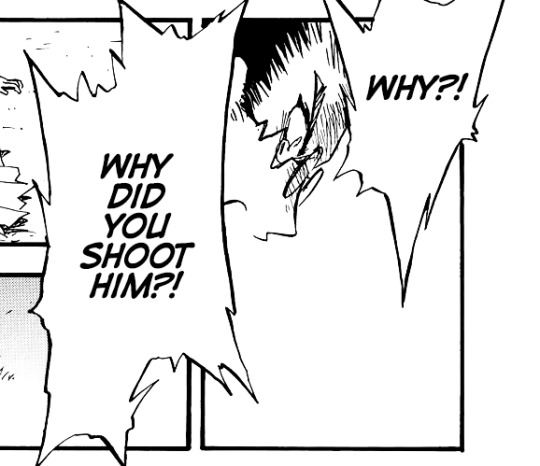

And it's these struggles with doubt, these moments of fear and cynicism overtaking faith that are so instrumental to the Christian perspective on salvation with its message of "You are flawed by nature, but you are loved beyond all comprehension nonetheless. Accept this love that it may save you and change you."
In Peter's case, although he is singled out multiple times for his failures (e.g. denying Jesus three times), he still holds a special place of prominence among Jesus' disciples. The 21st chapter of John features a conversation between Peter and the resurrected Jesus in which Peter affirms his love for Jesus three times (a reversal of the three times he denied Jesus), and Jesus responds by instructing Peter to care for his flock. After Jesus ascends to Heaven, Peter continues the work set out for him in building the early church until his eventual martyrdom, which, according to church tradition, occurs via upside-down crucifixion (see Caravaggio's rendition here). Interestingly, Wolfwood's martyrdom also involves lots of grievous bodily harm being dealt by crosses.

So the saint gets brought to death's doorstep, and that brings us to the infamous whiskey bottle

Others have already pointed out that "The Bride" likely refers to the Bride of Christ. This excerpt from the Catechism of the Catholic Church sums up the concept:
The unity of Christ and the Church, head and members of one Body, also implies the distinction of the two within a personal relationship. This aspect is often expressed by the image of bridegroom and bride. The theme of Christ as Bridegroom of the Church was prepared for by the prophets and announced by John the Baptist. The Lord referred to himself as the "bridegroom." The Apostle speaks of the whole Church and of each of the faithful, members of his Body, as a bride "betrothed" to Christ the Lord so as to become but one spirit with him. The Church is the spotless bride of the spotless Lamb.
Now Peter is of particular importance when talking about the Church as an institution, because in the Catholic tradition, Peter is believed to have been granted a distinguished position of authority as the very foundation of Jesus' church, and every Pope is considered a successor to Peter in their occupation of the Church's highest office.
So Peter = Pope = the head of the Bride of Christ. And if we take the reading of Wolfwood as a Peter analogue.... you see where we're going. The Bride of Christ has been sanctified through a powerful demonstration of sacrificial love and prepared for the wedding to the bridegroom, but right here Yasuhiro Nightow subverts the biblical metaphor to devastating effect. The wedding doesn't come to fruition, because Vash can't bring himself to step into the role of the heavenly bridegroom. In this moment, he just feels all too painfully human in his grief. Wolfwood ascends - celebrated across the sky by those he saved with his selfless love, but Vash descends - acting as an ordinary person mourning the loss of a loved one.

John 13:36 (NRSV) - Simon Peter said to him, “Lord, where are you going?” Jesus answered, “Where I am going, you cannot follow me now...."
#trigun#trigun maximum#trigun spoilers#trigun maximum spoilers#suicide mention#cw suicide mention#religion mention#christianity mention#trigunbookclub#the bookclub is a funeral procession this week#hugs going out to all of you#Guns&God meta
309 notes
·
View notes
Note
When you talk about Philippino history and then Roman history, as a Venezuelan it's been making me think about our history and like, I've always thought there's a lot of similarity there but now it's like...its so similar. Your house is haunted too! I always think about how we won wars against the colonizers but their ghosts are still there, and they still sit at the dinner table with us every night. Your work is so cool, I feel like I can extend that train of thought further through time. I've never been interested in Rome but now I kinda am!
Venezuela 🤝the Philippines: being haunted houses (colonized by Spain)
also that is so SO real, the ghosts really are with us!! THEY ARE AT!!! OUR DINNER TABLES!!!!! ngl, once you start noticing it, it's impossible to NOT notice how they've crawled into the spaces and just. stayed.
ancient Rome is so weird for it too, because if you asked me about it, I wouldn't immediately put ancient Rome down for haunting the Philippines, except for the fact that like Catholicism, it's fucking everywhere. it's gotten in the cracks and spaces between the walls. On the stage of theater, Nadres' Hanggang dito na lamang at maraming salamat: the main character is named after Julius Caesar

Closet Queeries, J. Niel C. Garcia
and so many people are named after figures from ancient Rome (I know enough Mark Anthonys I've run out of differentiating nicknames for everyone) that it rivals Catholic saints for naming conventions. neo classical architecture had it's moment in the sun in Manila, our ilustrados brought some of it back when they returned from Spain to call for reform, and then independence, and I am struggling to hold back a plague-infection comparison about that. like, something else crept in with Spain, and like Spain's ghosts, it Did Not Leave.
but on the other hand! there's a long, centuries long, tradition of using the events of the Fall of the Republic to discourse, discuss, to vent or call for action, current events. it provides a interlocutor when something hurts too much to say directly, it provides a stage to explore a tragedy that echoes in our own histories, it gives a script to voice an ideal that a government might otherwise put down. how many centuries have we used Brutus (and Cassius) to rail against Tyranny, and how many centuries with equal enthusiasm have people used Julius Caesar as a martyr to justify the rights of Kings and Empires? these things are equally as important (in a different way) from the ancient events that actually transpired. (this specific topic, of Brutus & the Assassination of Caesar and it's literary revivals in history, are the focus of The Brutus Revival, Manfredi Piccolomini)
and the cores of these things conflict with each other, but in that friction, it's like there's an invitation to sit down and think for a minute. to look back at history and feel it's immediacy in the present.
ANYWAY I got carried away, but I am glad!! that my stuff could make Rome interesting!!! I hope that you find new doors of thoughts to explore!!!!!!!
#holding this ask in my heart forever thank u for sending this anon#ask tag#idk sometimes i draw goofy shit because its fun. and gay stuff because I Like Men ofc im going to explore things thru that lens#but also. i feel a little like im trying to look at this lurking ghost of imperialism without. addressing it directly#my love for spectacle and drama directly against knowing that the historical horror is not. that far removed. heugh.#so this meant a lot to me!! i feel seen in a good way. thank u again!
165 notes
·
View notes
Note
This is more....confession than ask but I've been having a rough go of it. I was raised catholic and what little I saw of it in catholic school at a super young age was so full of art, mysticism, defiance AND peace, /kindness/, and encouragement to talk to God as /Father/, as family.....I felt so at home in it. I was pulled out of it bc my parents couldn't afford tuition by the time I was 9, so I went to public school. I saw the Church from the outside and I've had random bursts of OCD style attendance to mass vs not going. I feel more at peace with life with not going but I know I should. I know I disagree with the doctrines but I walk into a cathedral and I'm home. I'm moved to tears by stone stations of the cross and stained glass martyrs but I'm a queer adult who fucked with witchcraft and no longer aspire to be a nun or a saint. I feel like I don't belong but also feel bad telling my fellow queers I ID as Catholic knowing the atrocities committed by it and the trauma most of them have. Do you know anyone else with this experience?
I resonate so much with this ask on so many levels, anon, thank you for your earnestness and your honesty. I know a LOT of people with this experience, myself included, so you came to the right place. I'm no priest, but confessions are always welcome here <3
It sounds like you were formed (in the classical sense of spiritual formation, shaped like clay on a wheel or contoured like a rock worn by waves) by the sacredness you experienced in Catholic school. That was your entry point to God, your foundational understanding of the divine, and on one hand, what a blessing to be equipped at a young age with prayers and tools and stories and rituals to help you draw near to the source of all life! But of course, in another sense, how painful to come to the realization that this tradition you love has perpetuated brutal doctrines and painful teachings for centuries, that it has harmed those you cherish (and undoubtedly you as well).
However, I want to ask you some questions. Why do you need to be a nun, or any kind of saint? Why can't you just be a creature in a body that is soul-stirred by the stained glass and the stations of the cross and the tales of the heroic dead? Why should God take any less notice of you because you question, because your love and desire takes the queer shape that God has rooted within you, because you recoil at injustice and cruelty and corruption? Because you sought communion with something supernatural through a method not formally endorsed by the Church, yet practiced historically by many of its priests, scholars, and adherents? Because you grasp for goodness and sometimes prevail and sometimes fail, just like every human that's come before you?
If God is real, than God and all God's symbols and signs, all the rituals and tales and talismans, must be for God's people. And I'll tell you something I believe with all of myself: we are all God's people.
If your heart is most at peace not attending church, that's okay for a season, or maybe forever! But perhaps there are other ways your heart can rest in God, in nature or conversation with friends or personal devotion or private mysticism or communal prayer? You are heir to an inheritance of a long line of queer Catholics, as difficult as that badge is sometimes to bear, but your (our) queer siblings have reshaped history, theology, art, liturgy, music, and more with our talent and perspectives. We are members of the family, beloved children of an attentive and patient Father. No one gets to tell you to leave: this is your house, should you choose to reside here one day out of the year or many.
Sorry, I feel like I'm rambling, but this ask really touched me. Basically, there are not rules, anon. We're all going to die and we're all going to experience so much pain and joy in our glimmering, fragile lives, and God wants to be present in that pain and joy with us, in whatever form God takes, in whatever language we can understand.
I know it can be painful to tell someone you love who has been hurt by the church that religion still holds meaning for you, I wrestle with that every day, but I think the wrestling is worth it, if you proceed with honesty and compassion. No one can tell you what path to take, but I hope I can encourage you in that you aren't walking alone.
Be blessed in your seeking anon, and fortified by the saints, and guided by the light of the archangels and the gentle touch of Mary, and brooded over by the protective wings of God.
19 notes
·
View notes
Text

#traditional catholicism#traditional catholic images#traditional catholic saints#traditional catholic saints images#traditional catholic saints quotes#st. john fisher#traditional catholic martyr saints#the protestant revolt in england
2 notes
·
View notes
Text

Benvenuto Tisi 'Garofalo' (Italian, 1481-1559)
Saint Catherine of Alexandria, 1522
“Jesus has now many lovers of the heavenly kingdom but few bearers of His cross.” - Thomas à Kempis, Imitation Of Christ
#Italian art#christian martyrs#christian martyr#catholic art#christian art#catholic#christian#classical art#traditional art#saint catherine of alexandria#garofalo#Benvenuto Tisi#art#fine art#european art#blonde#woman#female portrait#female#portrait#europe#european#oil painting#fine arts#europa#mediterranean#saint#italy#italian#1400s
26 notes
·
View notes
Text

#St. Agnes of Rome#St. Agnes of Rome Quotes#Agnus#Saint Agnes#Saint Agnes Virgin Martyr#Catholic Saint Quotes#Catholic Saiints#catholic church#roman catholicism#rad trad#sspx#traditional catholic#trad cath#tradlr#trad#trad chad#trad fem#tradblr#traditional femininity#tradfem#archbishop#christ#christian faith#christian quotes#jesus#angels#ai art#ai generated#ai art community#catholic tumblr
6 notes
·
View notes
Text
St. Wenceslaus
st.-wenceslausDownload
Sources:
1962ordo.today
https://www.divinumofficium.com/

View On WordPress
#Catholic#Catholic mass#Catholic Prayer#Good King Wenceslas#Jesus#latinmass#Martyr#Martyrs#popefrancis#Prayer#Sacred Heart#sacred heart devotion#sspx#TLM#Traditional Catholic#Traditional Catholicism#Was there a real King Wenceslas?#Wenceslas was a real person#What did Good King Wenceslas do?#What is saint Wenceslaus known for?
1 note
·
View note
Text
The List So Far & Link to Current Polls (BELOW)
OKAY. This is what I've done. I've made this handy-dandy Google Doc listing all the saints that have been nominated, along with the category of bracket they'd be put into. I've purposefully left off the number of nominations to keep you on your toes. If you see a saint already on the list, you can submit propaganda for them! I'll consider that an additional vote. If you don't see a saint on the list and you want them, I'll add it and then update my tally :)
I'm pinning this post, the old pinned post with the rules can be found here.
also my apologies for spamming you with posts but it IS a tournament and I've got over 100 messages in my ask box (LOVE THE ENTHUSIASM KEEP IT UP)
EDITED TO ADD:
New categories:
Folk/Traditional - folk saints, saints who have legendary hagiographies, or saints who didn't go through the formal canonization process (e.g. the apostles and many early martyrs)
Pre-Schism - saints born/lived before 1054
Post-Schism - saints born/lived after 1054
Modern - 1800s (ish) to today
Beatified - not formally canonized by the Church yet. Servants of God, Blesseds, Venerables, etc.
LINKS TO PAST POLLS
FOLK/TRADITIONAL SAINTS - ROUND ONE (poll over)
FOLK/TRADITIONAL SAINTS - ROUND 1 WINNERS/ROUND 2 BRACKET (poll over)
FOLK/TRADITIONAL SAINTS - ROUND 2 WINNERS/ROUND 3 BRACKET (poll over)
FOLK/TRADITIONAL SAINTS - ROUND 3 WINNERS/ROUND 4 BRACKET (poll over)
FOLK/TRADITIONAL SAINTS - ROUND 4 WINNERS/ROUND 5 BRACKET (poll over)
WINNER OF FOLK/TRADITIONAL BRACKET: ST MARY MAGDALENE
PRE-SCHISM BRACKET ROUND 1 (poll over)
PRE-SCHISM SAINTS ROUND 1 WINNERS/ROUND 2 BRACKET (poll over)
PRE-SCHISM SAINTS ROUND 2 WINNERS/ROUND 3 BRACKET (poll over)
PRE-SCHISM SAINTS ROUND 3 WINNERS/ROUND 4 BRACKET (poll over)
PRE-SCHISM SAINTS ROUND 4 WINNERS/ROUND 5 BRACKET (FINAL ROUND) (poll over)
WINNER OF THE PRE-SCHISM BRACKET: ST BARBARA
POST-SCHISM SAINTS ROUND 1 (poll over)
POST-SCHISM SAINTS ROUND 1 WINNERS/ROUND 2 BRACKET (poll over)
POST-SCHISM SAINTS ROUND 2 WINNERS/ROUND 3 BRACKET (poll over)
POST-SCHISM SAINTS ROUND 3 WINNERS/ROUND 4 BRACKET (poll over)
WINNER OF THE POST-SCHISM BRACKET: ST JOAN OF ARC
MODERN SAINTS ROUND 1 (poll over)
MODERN SAINTS ROUND 1 WINNERS/ROUND 2 BRACKET (poll over)
MODERN SAINTS ROUND 2 WINNERS/ROUND 3 BRACKET (poll over)
MODERN SAINTS ROUND 3 WINNERS/ROUND 4 BRACKET (poll over)
WINNER OF THE MODERN BRACKET: ST THERESE OF LISIEUX
BONUS POLLS
non saint related polls:
Best Holy Day of Obligation
Best Catholic Religious Order
Best Catholic Sacrament
Rosary Polls
Best 20th Century Pope
Best Gospel
Best Papal Encyclical
Best Apostle
Best Fruit of the Holy Spirit
Best Liturgical Season
Best Liturgical Color
Best Book of the Pentateuch/Torah
#catholic saint tournament#catholic saints#catholic#catholicism#saints#tumblr tournament#tumblr tournaments#tumblr polls#tumblr brackets#tumblr bracket
77 notes
·
View notes